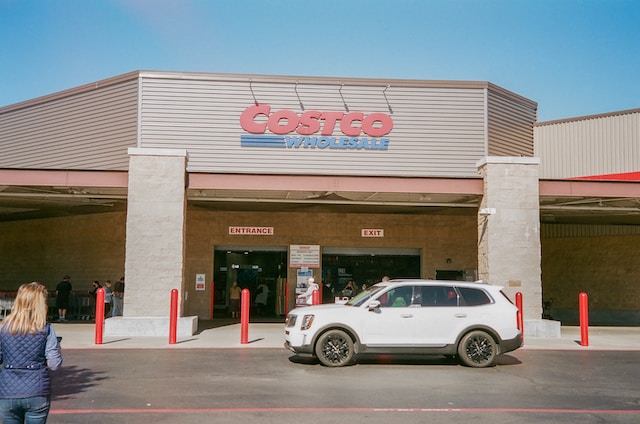Leslie's (LESL) Q3 Sales Drop 12%

Key Points
Revenue (GAAP) and earnings (non-GAAP) missed analyst estimates by wide margins in Q3 FY2025, the crucial summer quarter.
Comparable sales fell 12.4%, reflecting weak consumer demand and adverse weather impacts.
Net operating cash flow turned negative for the nine months ended June 28, 2025.
Leslie's (NASDAQ:LESL), the leading direct-to-consumer pool and spa care retailer, posted quarterly results on August 6, 2025 for its fiscal third quarter coming in well below Wall Street expectations. The company reported a sharp drop in revenue and profitability, missing analyst estimates for both GAAP revenue and non-GAAP EPS. Revenue (GAAP) reached $500.3 million against a consensus estimate of $531.18 million, while adjusted diluted earnings per share landed at $0.20 compared to the $0.26 forecast. Net income (GAAP) plummeted to $21.7 million from $60.7 million, comparing Q3 FY2025 to Q3 FY2024. The period, which marks the company’s peak season, saw a significant downturn, raising questions about the impact of weather, competition, and demand on Leslie's ongoing business transformation.
| Metric | Q3 2025 (Three Months Ended June 28, 2025) | Q3 2025 Estimate | Q3 2024 (Three Months Ended June 29, 2024) | Y/Y Change |
|---|---|---|---|---|
| EPS – Adjusted Diluted (Non-GAAP) | $0.20 | $0.26 | $0.34 | (41.2%) |
| Revenue (GAAP) | $500.3 million | $531.2 million | $569.6 million | (12.2%) |
| Adjusted EBITDA | $81.6 million | $109.5 million | (25.5%) | |
| Gross Margin | 39.6% | 40.2% | (0.6 pp) | |
| Net Income (GAAP) | $21.7 million | $60.7 million | (64.2%) |
Source: Analyst estimates for the quarter provided by FactSet.
What Leslie's Does and Key Priorities
Leslie's operates a nationwide retail network focused on the maintenance, cleaning, and care products for residential and commercial pools and spas. Its business model combines more than 1,000 brick-and-mortar locations with a leading digital platform, which allows it to serve both households and professionals. Sales include proprietary products, chemicals, equipment, and repair services.
The core of Leslie's business is its direct-to-consumer market leadership, which depends on brand recognition, exclusive product offerings, and its ability to serve customers through digital and physical channels. More than 55% of sales come from proprietary brands, providing the advantage of higher margins. The company’s strategy also includes expanding into new customer segments, building its digital presence, and investing in loyalty programs and operational efficiency to solidify its market share.
Quarterly Highlights: Financial and Operational Developments
This quarter, Leslie's reported broad-based declines in nearly all key financial metrics. Revenue (GAAP) dropped by 12.2% compared to the prior-year period, falling short of expectations by $30.88 million (GAAP revenue). Management attributed much of this shortfall to unfavorable weather across its major markets and intensified price competition from other retailers during the peak season. Comparable sales, which measure sales at stores open for at least a year, declined 12.4%. This signals a decline in traffic and sales volume at both physical locations and digital channels. New stores contributed $1.2 million, suggesting negligible impact from recent expansion efforts.
Gross profit (GAAP) declined 13.5% year over year, as gross margin (GAAP) shrank from 40.2% to 39.6%. This slight dip aligns with management’s comments on aggressive price competition and demand weakness. Selling, general, and administrative expense (GAAP) saw only a modest decrease (down about 1%) as the company reduced labor hours. However, fixed costs remained high relative to slumping revenue, driving operating income (GAAP) down 30.1% to $68.3 million compared to the prior year period.
Profitability fell sharply for the period, with net income (GAAP) dropping 64.2% to $21.7 million compared to the prior year period. Adjusted EBITDA decreased by 25.5% to $81.6 million compared to $109.5 million in the prior year period. These metrics show the impact of falling sales, thinner margins, and continued cost pressures on overall company performance.
There was no breakout in the earnings release for performance by product category or channel, such as proprietary brands versus third-party products, or physical stores versus digital sales. The company also noted ongoing "strategic and operational review," hiring outside consultants to accelerate transformation plans. While it took some cost-control actions, including reduced labor, overhead remained high.
Liquidity, Cash Flow, and Forward View
Net cash from operating activities (GAAP) was $(39.4) million for 9M FY2025, compared to $60.4 million for 9M FY2024. Cash and equivalents (GAAP) fell by $65.8 million since the prior year end, closing at $42.7 million as of the end of Q3 FY2025. Long-term debt was modestly reduced by $27 million during 9M FY2025, bringing it to $751.5 million. The company's stockholders’ deficit widened to $246.2 million.
For FY2025, management now expects full-year revenue (GAAP) to be between $1,210 million and $1,235 million. It forecasts a net loss of $57 million to $65 million (GAAP) and an adjusted EBITDA of $50 million to $60 million (non-GAAP) for FY2025. No specific quarterly recovery plans or guidance were provided for upcoming quarters. Investors should monitor sales momentum, inventory management, and updates from the company’s ongoing strategic review as signals of stabilization or further risk. Revenue and net income presented using U.S. generally accepted accounting principles (GAAP) unless otherwise noted.
Where to invest $1,000 right now
When our analyst team has a stock tip, it can pay to listen. After all, Stock Advisor’s total average return is 1,026%* — a market-crushing outperformance compared to 180% for the S&P 500.
They just revealed what they believe are the 10 best stocks for investors to buy right now, available when you join Stock Advisor.
*Stock Advisor returns as of August 4, 2025
JesterAI is a Foolish AI, based on a variety of Large Language Models (LLMs) and proprietary Motley Fool systems. All articles published by JesterAI are reviewed by our editorial team, and The Motley Fool takes ultimate responsibility for the content of this article. JesterAI cannot own stocks and so it has no positions in any stocks mentioned. The Motley Fool has no position in any of the stocks mentioned. The Motley Fool has a disclosure policy.







